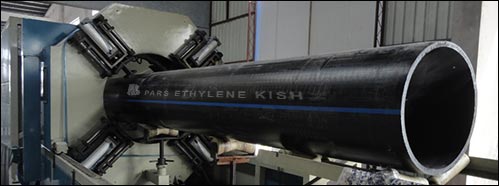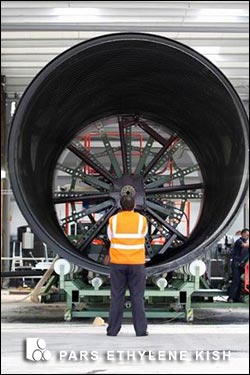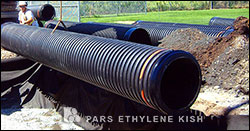
PE PIPE SYSTEMS
Polyethylene pipe (PE Pipe) manufacture commenced in Australia in the 1950′s with small diameter pipes used for rural, irrigation and industrial applications. Since then, PE (Polyethylene) use and the number of applications for PE pipes has grown enormously, due to its versatility and the advantages it offers over iron, steel and cement systems.
enormously, due to its versatility and the advantages it offers over iron, steel and cement systems.
The flexibility of PE pipe allows cost savings in installation. Trenchless technology can avoid the need for open trenches and reduce the disturbance to the public and environment by pulling long lengths of PE pipes through holes below ground bored by mechanical moles. PE is often used in renovation of old pipelines as it can be readily inserted as a structural lining into an old pipeline. PE’s resistance to ground instability means that PE gas and water systems were the only systems to survive the major earthquakes in Kobe, Japan in 1995.
PE pipe can be supplied in straight lengths or in coils, reducing the need for joints and fittings. PE pipes can be jointed using butt and electrofusion techniques or using mechanical fittings.
There are a range of grades offered in PE products for different applications:
Low density PE – has high flexibility and retention of properties at low temperatures. The main applications of LDPE are in micro irrigation, low pressure drip irrigation, rural irrigation and stock watering applications.
PE 80 has a Minimum Required Strength (MRS) of 8.0 MPa as determined by regression analysis. In the past, this type of PE has been referred to as Medium Density PE or MDPE.
PE 100 is the most recently developed polyethylene grade and ha s higher strength and toughness than earlier generation materials. PE 100 has an MRS of 10.0MPa.
s higher strength and toughness than earlier generation materials. PE 100 has an MRS of 10.0MPa.
PE pressure pipes are designated by their outside diameter or DN. For water and other general pressure applications, the maximum allowable operating pressure (MAOP) with a minimum service coefficient is designated by the pressure rating or PN. The SDR of a PE pipe refers to its ‘Standard Dimension Ratio’ which describes the geometry of the pipe and is the ratio of the outside diameter and the minimum wall thickness. Pipes with a higher SDR have a thinner wall than pipes with a low SDR. The SDR can be related to the MAOP using the material MRS and the service coefficient appropriate for the application.
PE pipes are used in a wide range of applications including:
♦ Water supply
♦ Sewerage
♦ Gas
♦ Compressed Air
♦ Mine and slurry pipelines
♦ Irrigation
♦ Drainage
Polyethylene pipes are also used as conduits for telecommunication and electrical applications.
Source: http://www.vinidex.com.au